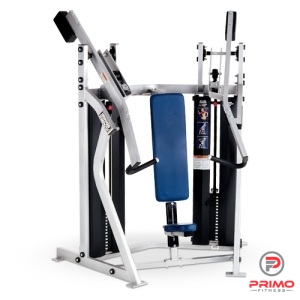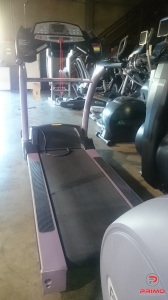When it comes to your commercial gym, the design is everything. The design not only means your clientele will be able to move freely throughout the gym, but it also creates an ambiance that’s unique to your space. This ambiance will be what keeps your customers coming back for their workouts.
To help you get started designing your gym, follow these tips:
Consider Space and Location
Gyms should be as spacious as possible because they have to simultaneously facilitate various workouts by a number of different people. With all of the folks walking around your gym, you don’t want them bumping into one another or any of the machines. Your gym design should also allow for future expansion or the addition of more equipment.
When you first start designing your gym, you may not know what machines or equipment will be the most popular. For this reason, it’s best to order only a couple of each machine so that you can watch people and see which items they gravitate to. Those are the items you can order more of in the future.
This will also allow you to fill the space over time, instead of making the decision to order multiple equipments on a whim, even if it might not be what your patrons need.
Build a Supportive Environment
When designing a commercial gym, you have to design in a way that will promote motivation. You should take into account the colors in the room, lighting, air quality, and air conditioning.
You may also want to pick out wall décor that motivates your clients to continue working out, even when their strength is flagging. You may also want to add televisions or stereo systems so that they can pass the time with their favorite tunes and television shows as they exercise.
Choose Flooring
The most important thing to remember here is that you may need different types of flooring in different parts of the gym. For example, you’ll need sprint track flooring for prowler and sled work. Sprint track flooring is very thin and isn’t intended to absorb heavy impact. In contrast, free weight flooring is heavy duty and is meant to absorb the impact of dumbbells and weights dropped on the floor daily.
In general, you’ll need to consider the continuous wear and tear your floor will experience from hundreds of people walking around the gym a day. Make sure to choose a floor that absorbs impact, protects the floor beneath it, and can cushion someone’s fall in case of an accident.
Consider Hygiene
It’s absolutely critical to be able to control the cleanliness of your gym. After all, with so many people sweating on the floor and machinery, you don’t want your gym to gain a reputation for being dirty! The harsh reality is that many people sweating it out in one room can create a smell, so it’s important to consider air filtration that will improve the air quality in your gym.
You should also plan where you put your locker rooms and showers. This will be crucial to the cleanliness of your gym. Many people come to the gym on their lunch breaks or before work, so they’ll need to wash off their sweat and grime before returning to their day.
Finally, make sure that you provide towels and wipes so that people can clean the machines after they use them so that they’re ready to go for the next person.
Plan with Safety in Mind
The safety of your patrons is critical for any commercial gym. Injuries from accidents within your space and incorrect use of equipment can be detrimental. To minimize injuries, you’ll need to keep your space open. You should also consider:
Ensuring ample storage
While many people will choose to store their items in the locker rooms, they’ll most likely want to bring their own sweaters, water bottles, and phones into the gym space.
Checking equipment
Malfunctioning equipment could hurt your patrons, so make sure to periodically check if your machines are in proper working order. Further, if you notice a machine is often being handled incorrectly by patrons, make sure to post safety instructions on a wall nearby.
Try the “Rule of Quarters”
It’s typically best for commercial gyms to split the area into quarters and designate one quarter to each category. Each section has its own purpose; you should have a cardio area, selectorized area, big iron area, and sub-functional area. This will ensure the safety of your clients because it prevents confusion and clutter.
Try to put your cardio space with essential equipment like treadmills, ellipticals, bikes, and more toward the front of the facility. Your selectorized equipment, including multi-gyms and cable machines, should be placed in the middle of the gym. Next, toward the back should be big iron with weight training equipment.
The sub-functional area should be complete with fitness mats, stability balls, and dumbbells. You can mix this section with big iron if you’re limited on space and function.
Buy the Essential Equipment
It’s important to purchase the right gym equipment for your commercial gym. While you want your gym to be unique, you’ll still have to purchase the essentials, like treadmills, stair climbers, and more.
These are the items that many people purchase gym memberships for, so while you’ll want to offer other fitness equipment that stands out, start by ensuring you have the items that your customers come to you for in the first place.
Take Your Budget into Account
While designing the commercial gym of your dreams is possible for some, others are on a strict budget. However, just because you have constraints, doesn’t mean you can’t design the best commercial gym in the area. Work with gym equipment suppliers that provide discounts on new and used equipment, along with packages that can suit your needs.




